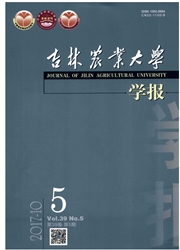

 中文摘要:
中文摘要:
为了提高林木生物量参数的计算精度,根据林木相对生长公式(幂函数),阐述用非线性最小二乘法求解生物量参数估值的原理、方法和过程;给出计算参数估值之方差与协方差的公式;揭示幂函数对数线性化回归的本质。通过理论和实例分析,将非线性最小二乘(NLS)法与常用的对数线性化最小二乘(心)法进行比较。结果为用NLS求解的林木生物量参数与用LLLS求解的林木生物量参数相比有明显的差异;用NLS求解的林木生物量参数的精度高于用LLLS求解的林木生物量参数的精度;用NLS回归的林木生物量方程比用LLLS回归的林木生物量方程具有更好的相容性;LLLS法具有异方差性,不满足标准线性回归的基本假设。
 英文摘要:
英文摘要:
To improve the precision of tree biomass parameter calculation, this paper explicates the principle, method and process to estimate the parameters of tree biomass by the nonlinear least square according to the formula of allometry method(power function). It gives the formula to calculate the variance and covariance estimated parameters, and reveals the essence of logarithmic linearization regression of power function. With the theoretical and practical data analysis, it compares the nonlinear least square method (NLS) with the logarithmic linearization least square method ( LLLS). The concrete conclusions in the paper are that tree biomass parameters estimated by NLS are significantly different from those estimated by LLLS; The precision of tree biomass parameters estimated by NLS is higher than that by LLLS; The regression equations of tree biomass constructed by NLS have better compatibility than those by LLLS; The LLLS method has heteroscedasticity and it does not satisfy the basic hypothesis of standard linear regression.
 同期刊论文项目
同期刊论文项目
 同项目期刊论文
同项目期刊论文
 期刊信息
期刊信息
